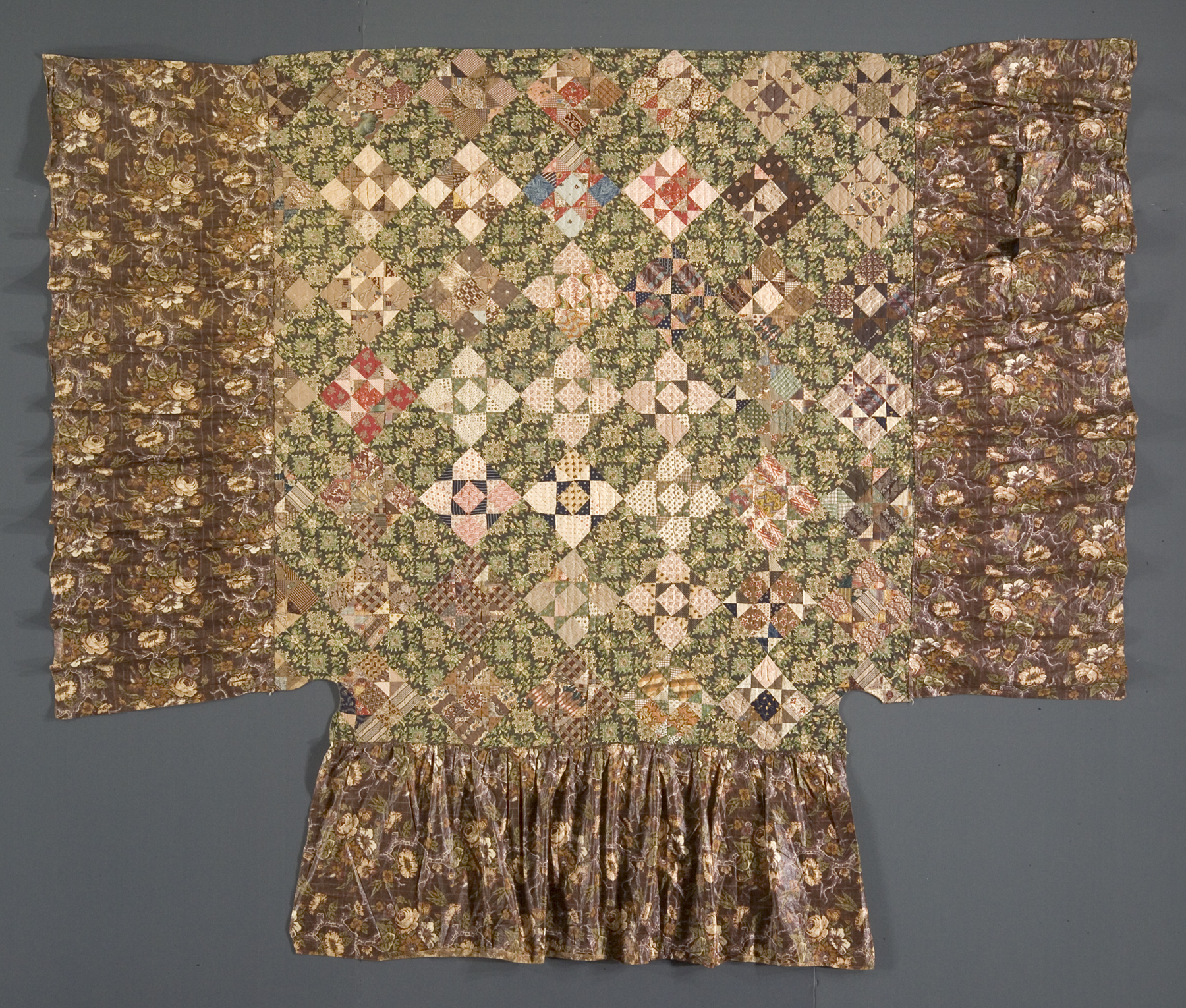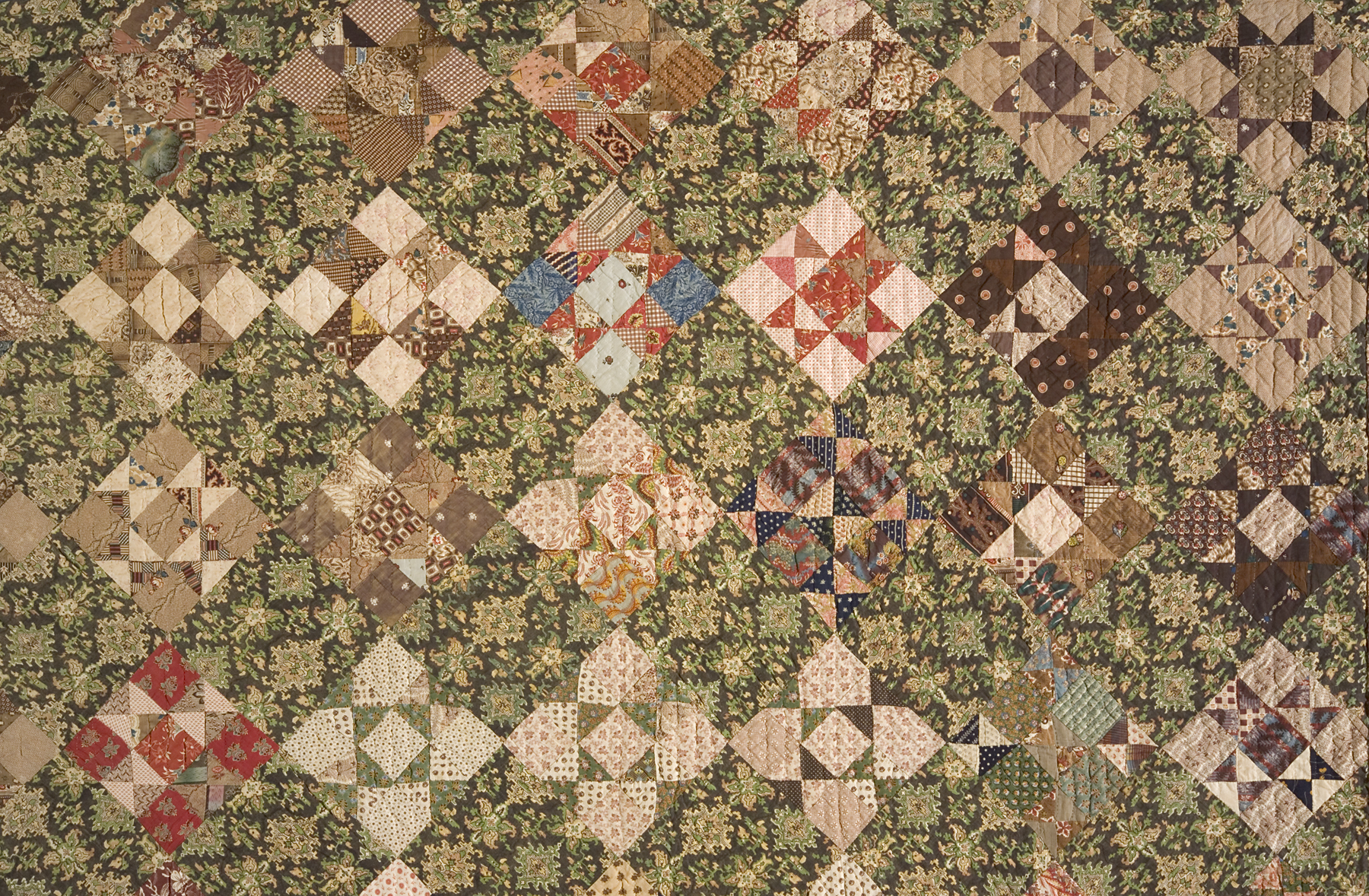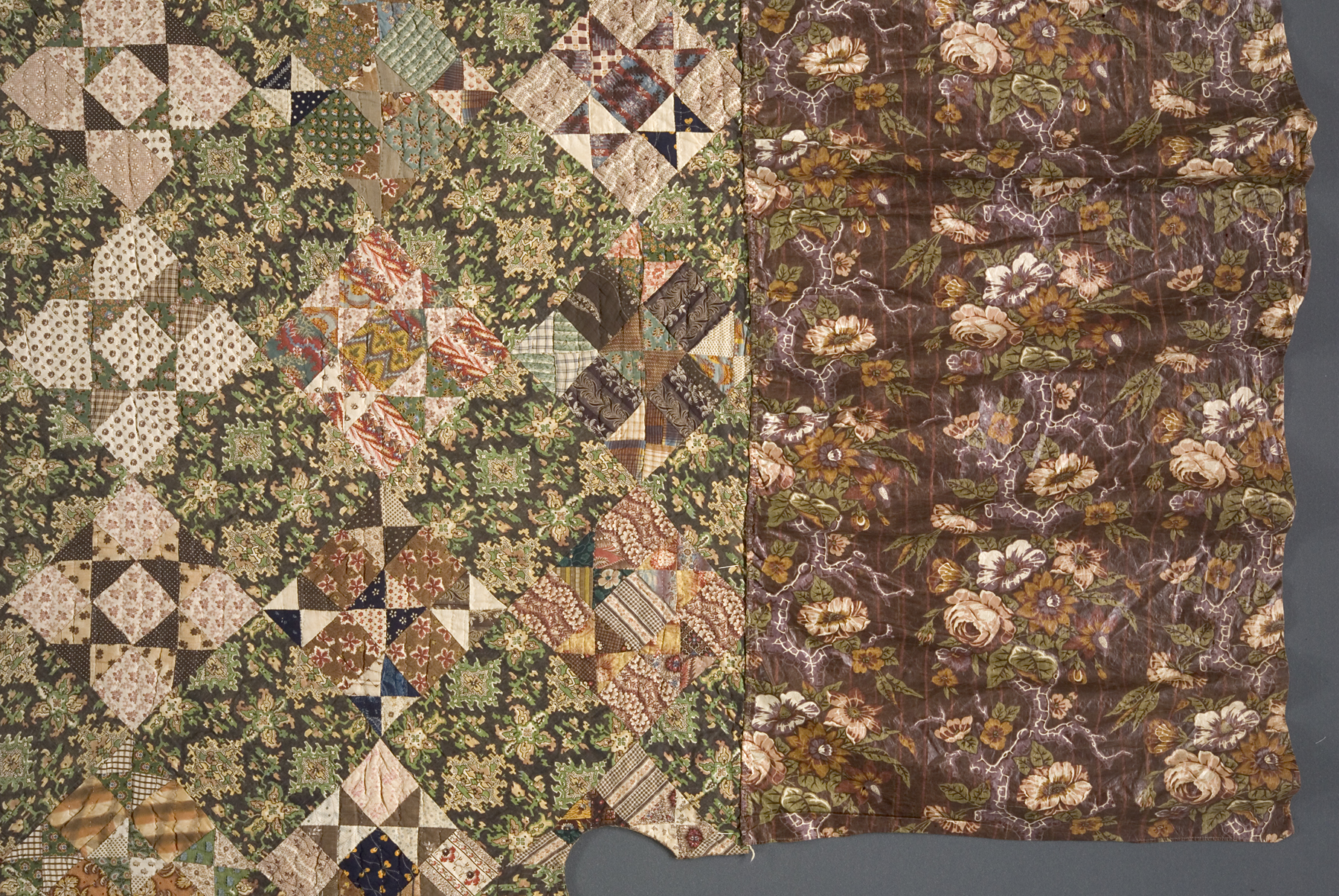Ohio Star with chintz flounce quilt, unknown maker from the United States
Artwork Overview
Ohio Star with chintz flounce quilt
, circa 1825–1850
Where object was made: United States
Material/technique: piecing; quilting; calico; chintz; cotton
Credit line: William Bridges Thayer Memorial
Accession number: 1928.0946
Not on display
If you wish to reproduce this image, please submit an image request



